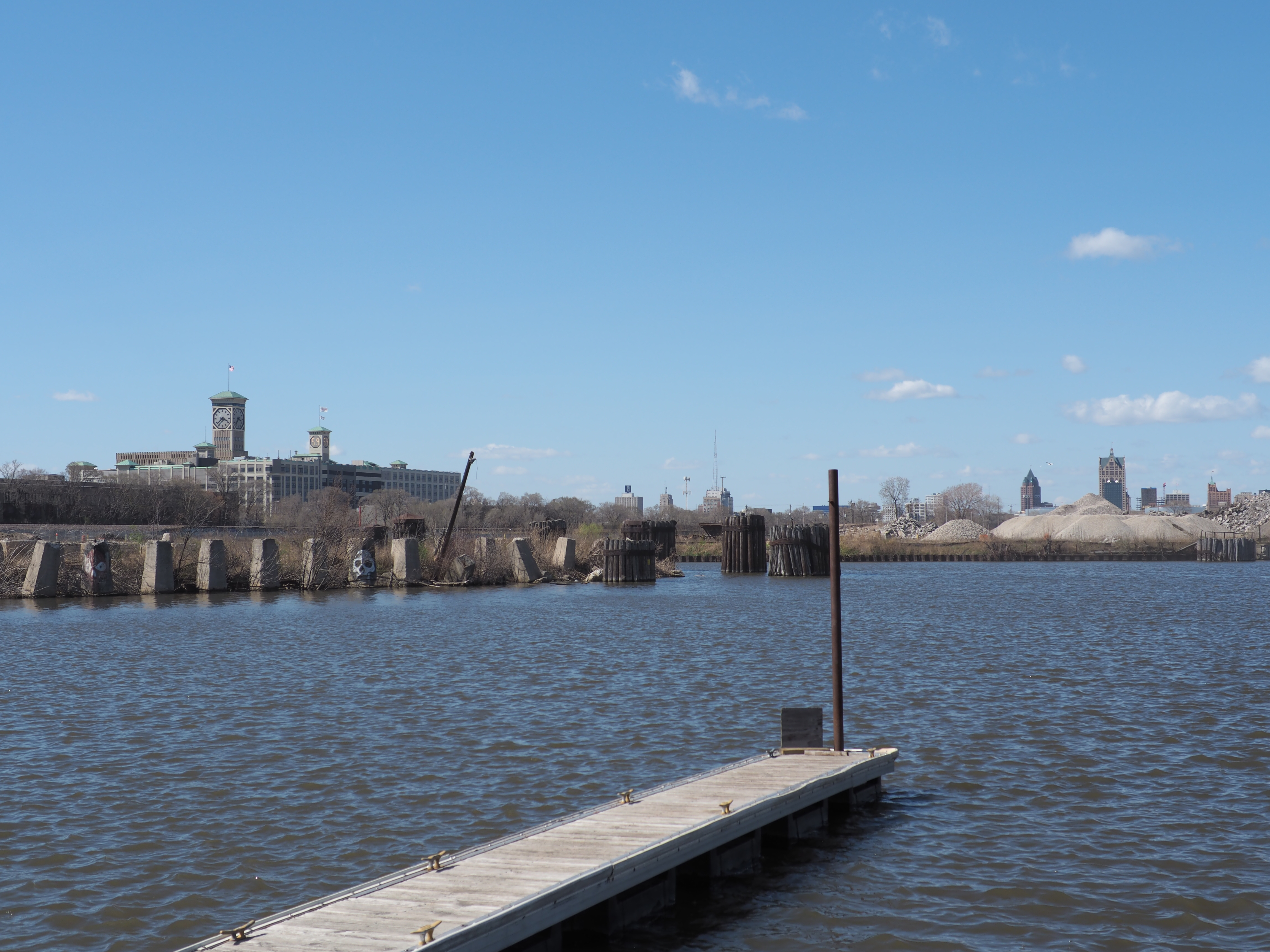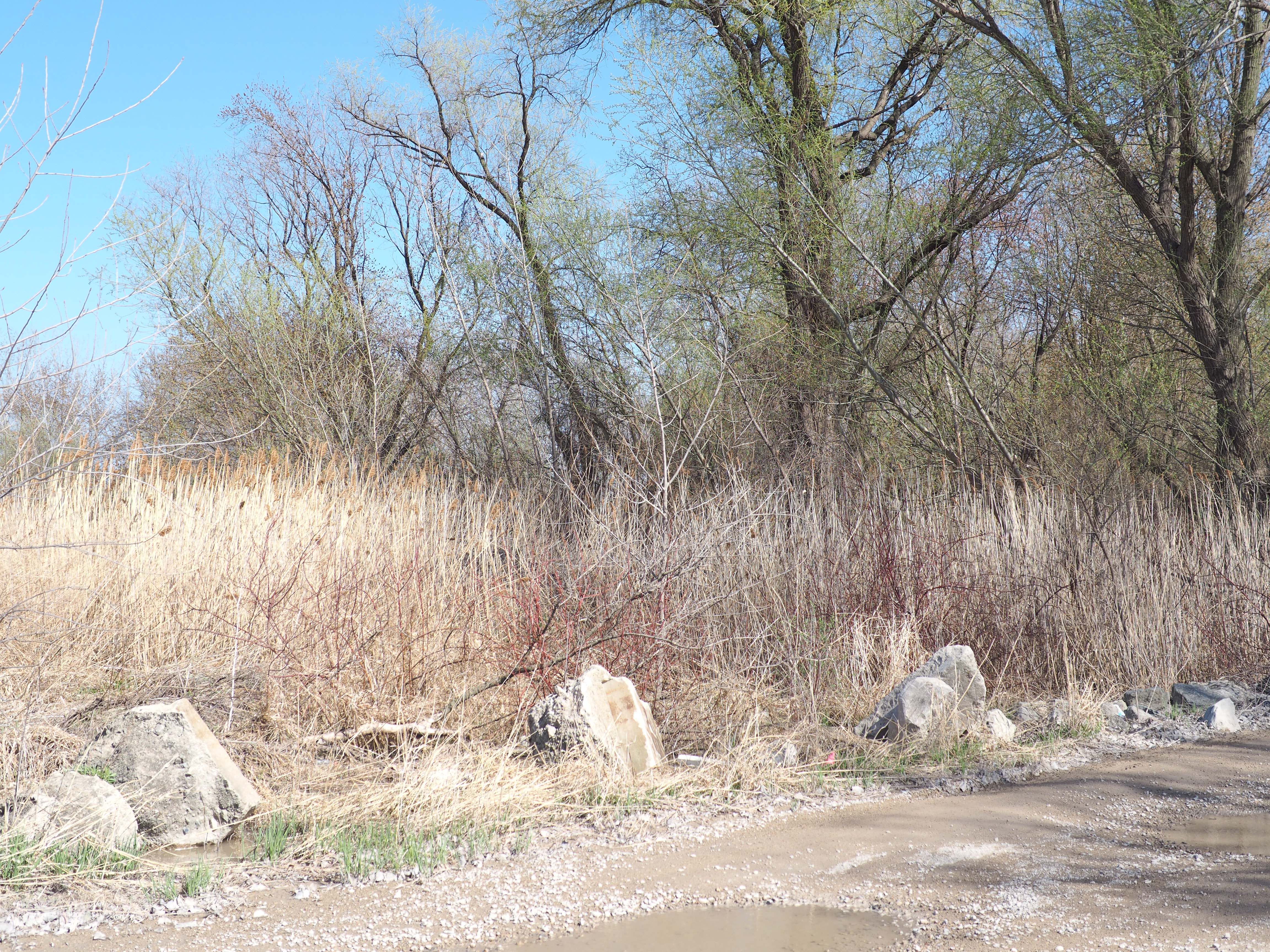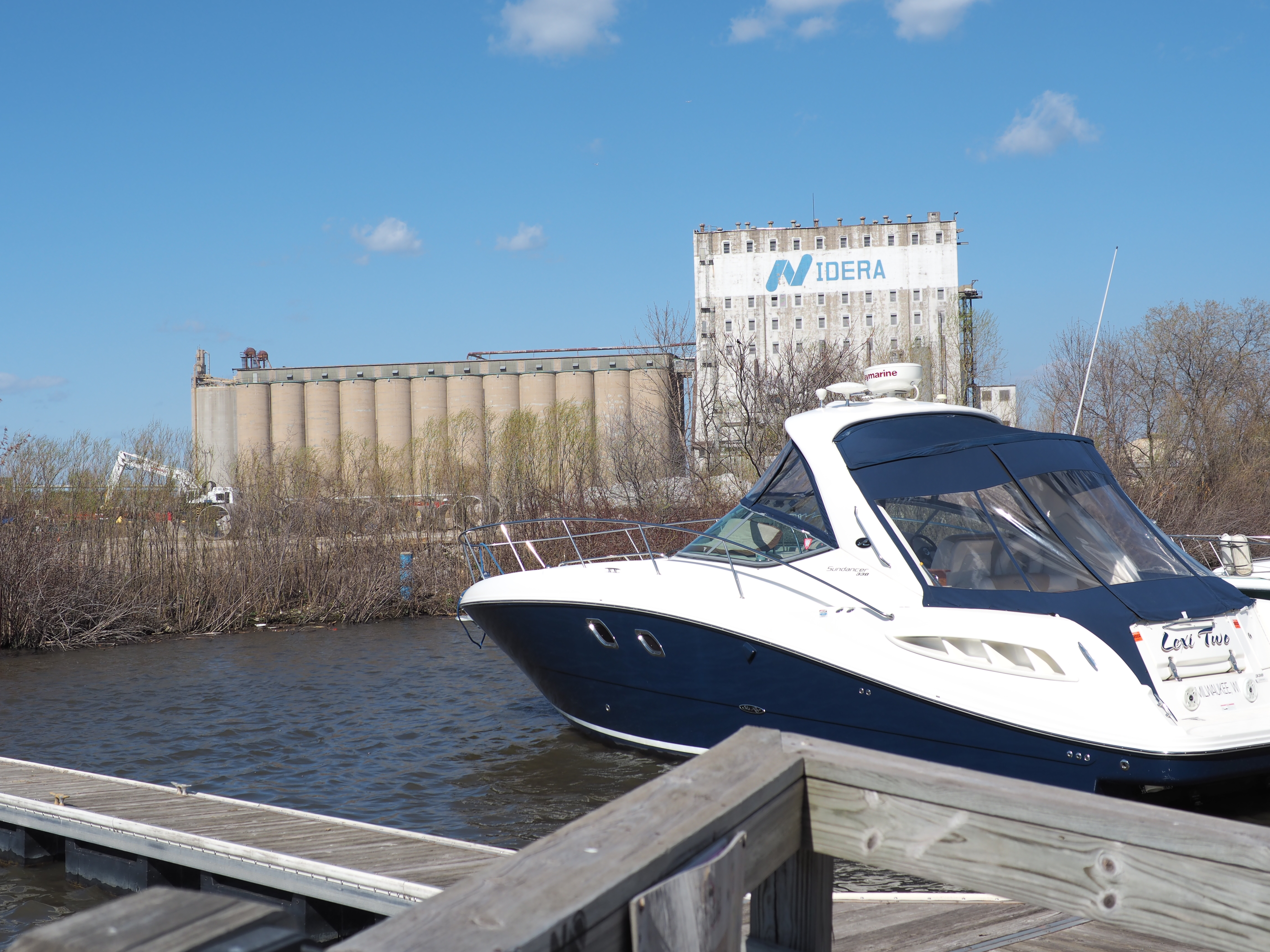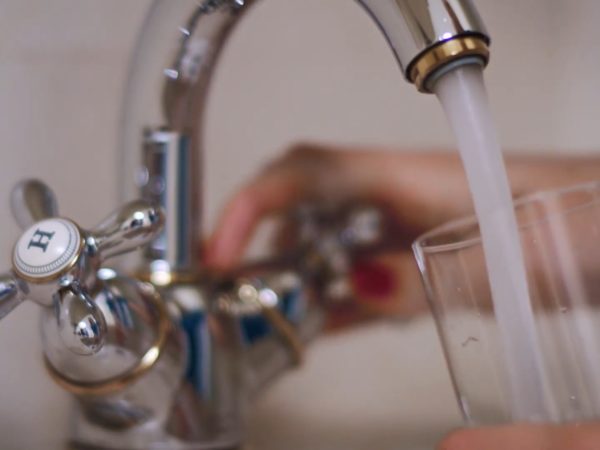
The last salvageable chunk of wetland on the Milwaukee Estuary doesn’t appear on any city map.
It’s a 7-acre pocket of green tucked away on the southeast, bordered by railroad tracks and the Kinnickinnic River.
To get there, you might look for the colorful collection bin that belongs to Kompost Kids, a non-profit aiming to “make dirt, not trash.” Or you could follow signs for Barnacle Bud’s to grab a sandwich and a beer. The restaurant sits across the road from the filled-in wetland.
However you choose to find it, upon arriving you might look around and wonder: Where exactly is all the nature?
It’s here, or at least remnants of it are. Hidden behind a fence, overtaken by invasive plants, the pond has survived despite decades of abuse. And it offers proof that there’s still hope for Milwaukee’s wetlands.
“There’s not a lot of reason people come back here,” said Benji Timm, the project manager for the Grand Trunk/Bay View wetland restoration. “Historically it’s been a place where people came to get rid of unwanted things.”
That could mean anything from illegally dumping contaminated liquids to offloading old refrigerators. The spot was once so popular with kids setting fire to stolen cars that the city had to install a large metal gate to keep them out.
Today the gate remains locked, and a fence surrounds the restoration site. Whenever Timm gets messages from teachers hoping to bring students into the preserve, he has to tell them no. The soil is still contaminated with heavy metals and chemicals like PCBs and PAHs. The forest includes dense thickets of cow parsnip, a weed whose sap can cause blistering burns after being exposed to sunlight.
But following the principle of “if you build it, they will come,” the City of Milwaukee and a half-dozen partners have decided to invest more than $3 million to rehabilitate the neglected patch of wetland. They hope that in the next few years, the Grand Trunk/Bay View wetland will provide habitat for northern pike, migratory birds, salamanders, frogs and native plants.
Maybe it’ll draw some humans down to the waterfront, too. Just as long as they’re careful not to disturb the wildlife.
Remedial plan 30 years in the making
Since European settlers began colonizing Wisconsin in earnest in the 19th century, the state has lost more than half of its wetlands—any soggy ecosystem where water exists at or near the surface of the earth for enough of the year to allow hydrophytic plants to grow.
This description encompasses a broad variety of landscapes: bogs, marshes, swamps, ponds, even ephemeral wetlands that are only watery for part of the year.
For decades, these ecosystems were often all viewed the same way—as a nuisance. People filled or drained them to make way for farms, houses and eventually cities. Environments that once acted as flood protectors and natural filtration systems were replaced with sewage treatment centers and dams.
Species reliant on wetlands, like the Eastern massasauga snake and the four-toed salamander, began disappearing. Only after many were lost did people realize what wetlands were good for.
The city of Milwaukee, established in 1846, followed the same pattern as the rest of the state. Located on the western shore of Lake Michigan and intersected by three rivers (the Milwaukee, the Menomonee and the Kinnickinnic), the city was a prime location for shipping.
As Milwaukee grew, its port became a stopover for grains produced in the Plains states and shipped to Europe. The port also received millions of tons of coal each year.
To manage such huge quantities of boat and railway traffic, rivers were channelized, wetlands were filled, forests were razed, factories were built. A landscape that once transitioned gracefully between wet and dry became strictly delineated. Sand dunes and swamps disappeared; habitat for reptiles and birds shrunk to tiny slivers.
In 1987, the International Joint Commission, a Canadian-American group that monitors waterways around the two countries, designated the Milwaukee Estuary as an area of concern. The convergence of the three rivers and Lake Michigan had become polluted with toxic chemicals and heavy metals, and the environment was so heavily modified that it caused problems for wildlife and humans alike.
The Wisconsin Department of Natural Resources developed a remedial plan in 1991 that has continually been updated and acted upon. In 2008, the wetland restoration project was initiated.
Since then, it’s been a long series of surveys, soil and water tests, meetings and planning. In 2019, the plan is to remove 75,000 cubic yards of contaminated soil and begin uprooting invasive plants like buckthorn and phragmites.
In the next few years, wetland plants will be introduced, the nearby stream will be dredged, and a boardwalk will be installed for visitors to view the area without harming it. The eventual goal will have the Grand Trunk/Bay View wetlands as a destination for critters and humans alike.
Grand Trunk/Bay View transformation will go beyond wetlands
It’s almost impossible to envision such a transformation when standing on the gravel road between the marina and the fenced-off wetland. Plastic bags and mildewing bottles drift in a nearby stream. Planes buzz overhead, and heavy machinery grumbles at nearby industrial sites.
But for Timm, the area is layered with vestiges of the past and hints of the future. Having previously worked for the city health department putting together land-use histories, Timm is in the habit of looking deeper than surface level. Below ground are traces of early industries, like cow hair from the tanneries that once used the waterfront. A bump in the road marks the old railway line that once ran across this spot. Across the river is the former Solvay Coke site, one of the main sources of pollution.
The City of Milwaukee’s testing results of the sediment in the Grand Trunk/Bay View Wetland are available online.
Soon that empty lot will be filled by Komatsu Mining Corp, which bought the area to build their headquarters and a manufacturing facility. They plan to build facilities that will have near-zero carbon emissions, thanks to solar panels, green spaces and geo-thermal heating. Next door is the University of Wisconsin-Milwaukee School of Freshwater Science, a ribbon of blue running across its building. A tall silo, with the name of the Chinese agriculture trader “Nidera” printed across it, attests to the ongoing success of the grain industry, and the construction company Michels still uses space along the river for operations. Between the Komatsu facility and the Grand Trunk/Bay View Wetland, this spot will be unrecognizable in a few years.
“For a long time we had our backs turned to the water because it was seen as a place you didn’t want to be,” Timm said. “It smelled, it was contaminated and mostly industrial, in some cases it was ugly.”
But over the past two decades, more and more development projects have transformed the waterfront into a place for recreation. Timm and his wife sometimes canoe or kayak down the river near their home and stop by one of the local breweries for drinks. A 3-mile-long riverwalk curves along either side of the Milwaukee River. Developers are clamoring to build more waterfront property.
“I’ve lived in Milwaukee for 20 years now, and the difference between the amount of water-connected uses that you see in the city today versus what you saw then is just monumental,” said Lilith Fowler, executive director of Harbor District Inc., an organization attempting to revitalize the old harbor. She’s partnered with the city to help with the wetland restoration project and looks forward to the return of local wildlife.
Whatever benefits the habitat may provide to human residents, Stacy Hron of the Wisconsin Department of Natural Resources agrees that the animals come first. “This is the only opportunity that we have that allows us to put wetlands on the (Milwaukee estuary area of concern).” And providing that habitat is a major component of restoring the estuary; it advances the goals of the remedial action plan.
For Timm, the site is answering an important question about urban life: can humans and animals coexist? Can we meet our economic, social and nutritional needs without squashing out the wildlife that doesn’t offer immediate consumer benefits?
“It’s always a struggle to find balance,” Timm said. “The exciting part is when you find that balance, and it works.”
Whether the Grand Trunk/Bay View wetlands will achieve that goal remains to be seen. But it’s not the only part of the city where the experiment is underway.
Read part two here.







